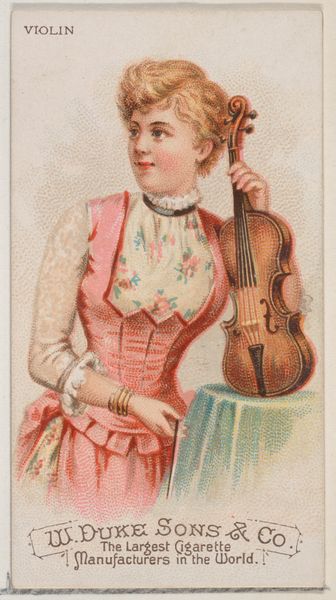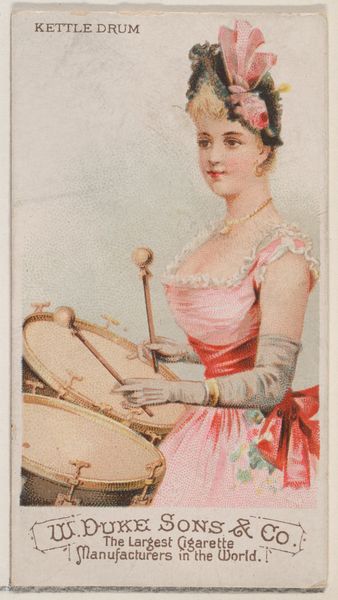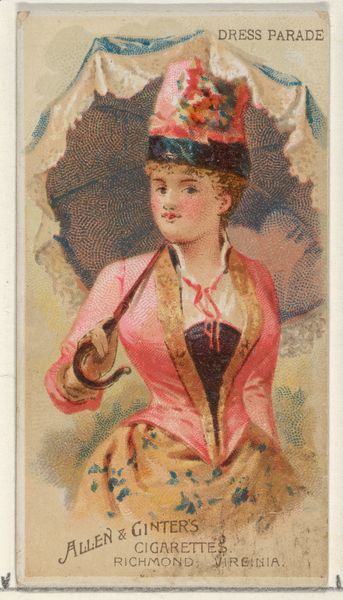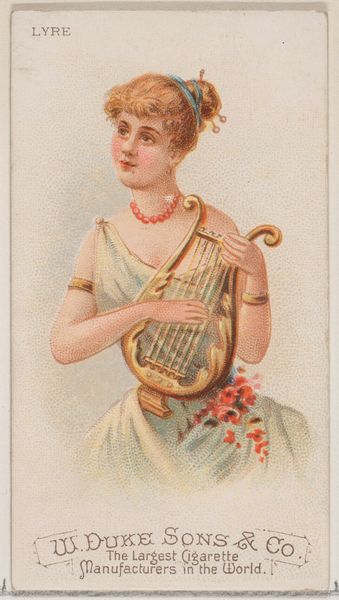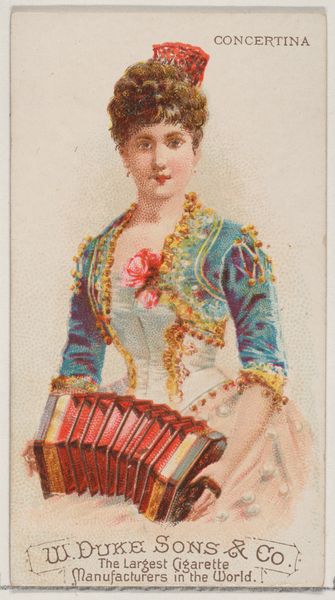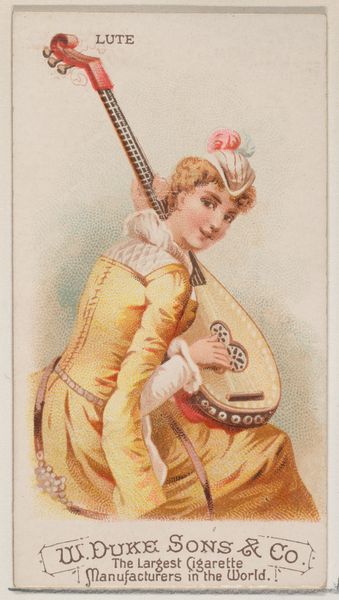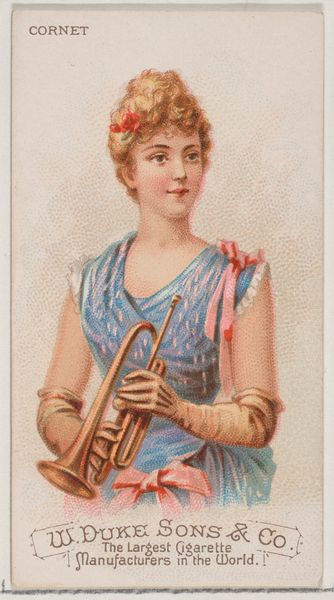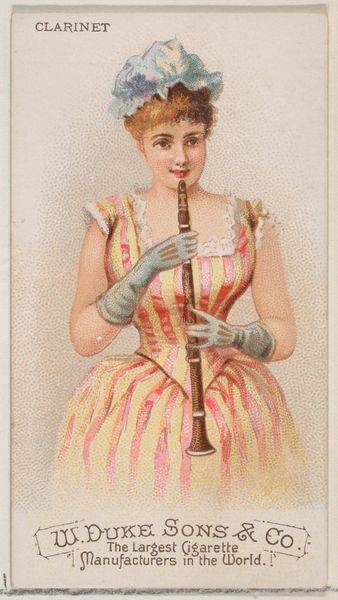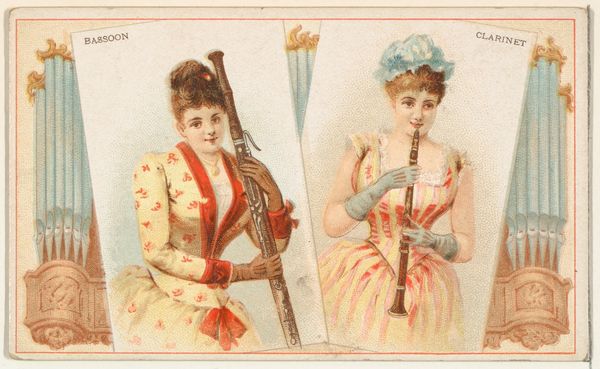
Bassoon, from the Musical Instruments series (N82) for Duke brand cigarettes 1888
0:00
0:00
drawing, coloured-pencil, print
#
portrait
#
drawing
#
coloured-pencil
# print
#
coloured pencil
#
genre-painting
#
musical-instrument
#
watercolor
Dimensions: Sheet: 2 3/4 x 1 1/2 in. (7 x 3.8 cm)
Copyright: Public Domain
Editor: Here we have the "Bassoon, from the Musical Instruments series (N82) for Duke brand cigarettes," dating back to 1888. I'm really struck by the delicate colouring and how it almost romanticizes this woman and her instrument, but something feels unsettling. What underlying story do you see in this seemingly innocent image? Curator: This chromolithograph, printed to advertise cigarettes, serves as an intriguing entry point to discuss gender and commercialism in the late 19th century. How does this image reinforce or subvert contemporary social norms through its visual language? What message is conveyed when a woman's image is employed to market cigarettes? Editor: It feels exploitative. Her refined pose is contrasted by the unhealthy associations of cigarettes and her potential role as an object of male fantasy. Curator: Precisely. Let’s also consider the intended audience and the historical context surrounding tobacco consumption. Who was this card designed to attract, and what narratives were being constructed around ideas of beauty and aspiration? Are there any details suggesting power dynamics, the status or race of this person that might reinforce such claims? Editor: Well, the detailed dress, paired with her complexion, implies a level of affluence… perhaps signaling smoking these cigarettes as a symbol of upward mobility to the growing middle class. Curator: Excellent observation. Examining these intersections reveals the complex negotiation of identity, consumerism, and representation embedded in even seemingly benign advertisements. Has your understanding shifted? Editor: Absolutely. I now see it as more than a simple portrait; it's a loaded commentary on social constructs of the time. Thank you! Curator: Indeed. Advertising as art provides a unique lens for examining historical biases. I, too, leave this interaction with greater understanding.
Comments
No comments
Be the first to comment and join the conversation on the ultimate creative platform.
